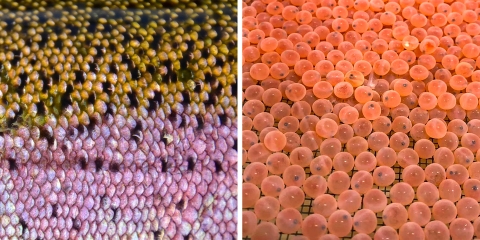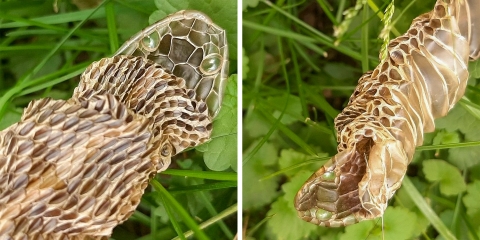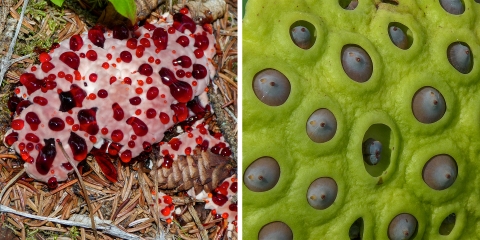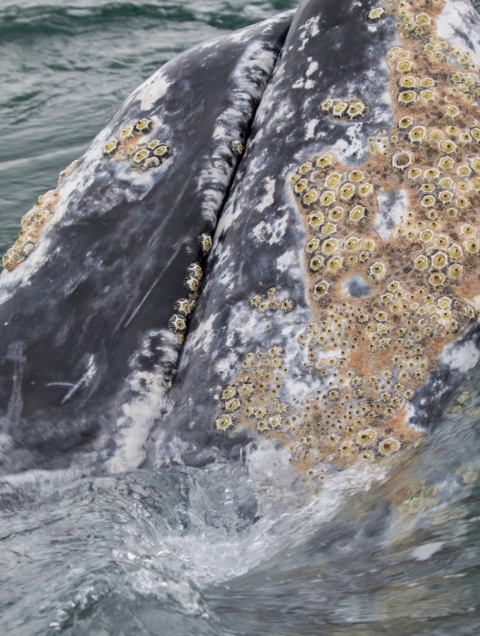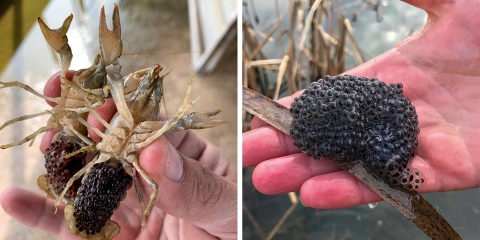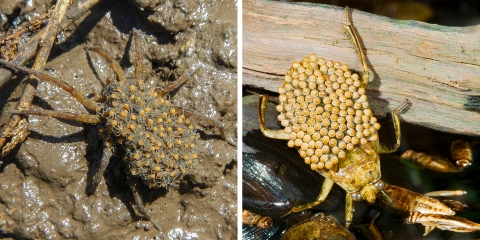Do you get an uncomfortable, maybe even a queasy feeling, whenever you see clusters of small holes or bumps? You may have trypophobia, a.k.a the fear or aversion of seeing such sights! Some of these images may be triggering to some, but they’re just part of nature. Let’s get into it.
Fish Scales and Eggs
Did you know fish scales have rings, called annuli, that can indicate the age of the fish? Scales protect fish, much like a suit of armor, and have a slimy covering of mucus which helps with swimming swiftly through water. One day, these googly-eyed salmon eggs at the Livingston Stone National Fish Hatchery in California, will hatch and be released in the Sacramento River system. Not too bad right? We’ll keep going…
Snake Shed? Don’t Mind if We Do.
Scaly holes are a new concept. Behold, a plains garter snake shedding. Like humans shed millions of skin layers every day, snakes go through a process called ecdysis, where they shed their skin in large, visible pieces. The two clear, circular scales covered the eyes. You’re welcome.
Fun-pods
The horror…except not really. The bleeding tooth fungus, despite its disconcerting name, is not actually bleeding. In moist conditions, this fungus secretes a red-colored sap liquid, which is forced out through the mushroom by excess absorption of water.
While that visual may make you feel a little squeamish, does the photo on the right trouble you? The American lotus is native to eastern and central North America. While their flowers are gorg, their seed pods on the other hand can be slightly… unsettling.
Need a Breather? Here’s a ‘Whale’ness Break.
Here we have a gray whale with barnacles and whale lice, yum! As the whale grows, the barnacle clusters grow too, gradually forming large, solid white colonies. When barnacles die off, they leave unique scar patterns that can be used to identify individual gray whales. Additionally, whale lice hitch a ride by attaching to the host using hooked legs called “dactyli,” and they feed on damaged tissue which can be beneficial to whales. Who would have thought a lice infestation wouldn’t be such a bad thing…
Crayfish and Frog Eggs
Mounds of eggs for everyone! These female crayfish have reached the ever endearing “berried” stage a.k.a carrying fertilized eggs under their tail. And then we we have frog eggs — the jelly consistency helps keep the eggs moist. How are we feeling?
Does this Bug You?
Ah yes, we’ve reached the boss mode of trypophobia triggers. To the left, we have dozens of newly hatched wolf spider babies (the orange dots) hitching a ride on mom’s back. She will continue to carry the baby spiders for a couple of weeks until they are ready leave. To the right, we have a male giant water bug with his precious egg cargo. How did they get there, you ask? Well, after mating, the female giant water bug simply glues her 150 (or more) eggs on her male partner’s back. Pretty casual first date.
It’s the Blank Stare for Me
And there we have it, the culprit who led us down this trypophobic train — the acorn woodpecker and their granary tree. A typical granary tree usually contains hundreds or even thousands of acorns, which is why this bird is deemed meal prepper champion of the year, as well as creator of ultimate nightmare fuel.
Nothing like a little nature trypophobia to keep the blood pumping. So, if you have this phobia, don’t trip (the author does, too). Thanks for hole-ding out.


